The stunning landscapes of the Aragon region in northeastern Spain are only surpassed by the magnificence of its capital, Zaragoza. Dividing Aragon through its centre, the Ebro River gently flows towards the sea. Along its banks, this ancient city tells the story of the cultures past and present through its captivating architecture, stunning art, and rich historical traditions. You will find some fascinating things to do in Zaragoza.
The creation of the city began in 14 BC under the Roman rule of Emperor Caesar Augustus. Because of the city’s glory, Zaragoza was afforded the privilege to bear his name, Caesaraugusta. As centuries passed, the control of the Zaragoza was won through battle, with each culture building upon the last, embellishing its beauty, and leaving lasting marks by displaying the best architectural designs and art of their time.
Crossing the Puente de Pierda as we enter the city, history unfolds around us as we dig deeper into the secrets of Zaragoza’s past. As we approach, the Basilica del Pilar and La Seo Cathedrals tower over the Plaza del Pilar below, where we find a statue of Goya, the city’s beloved painter whose works seem to touch every corner of the city. Overflowing with art, history, and culture may be overwhelming at first, but here are the best things to do in Zaragoza to make your trip memorable.
Contents
- Zaragoza, Spain
- Top Tours
- 20 Things To Do In Zaragoza
- 1- Marvel At The Zaragoza’s Most Iconic Structure
- 2- Ponder The Beautiful Designs Of La Seo Cathedral
- 3- Enjoy A Different Form Of Art At The Tapestry Museum
- 4- View The Best Collection Of Goya’s Works At The Museo Goya
- 5- Start In The Heart Of Zaragoza At The Plaza del Pilar
- 6- Cross The Puente de Piedra (Stone Bridge)
- 7- See Impressive Hispanic-Islamic Architecture At The Aljafería Palace
- 8- Explore The Zaragoza Museum
- 9- Travel Back In Time To A Roman Theatre
- 10- Imagine Roman Life At The Museo del Foro de Caesaraugusta
- 11- Find Out How Roman High Society Lived At Museo De Las Termas Públicas De Caesaraugusta
- 12- Try Some Local Tapas In El Tubo (the tube)
- 13- Take A Stroll Around The Parque Grande José Antonio Labordeta
- 14- Admire Gargallo’s Modern Sculptures At The Museo Pablo Gargallo
- 15- Learn About Aquatic Life At The Aquarium River of Zaragoza
- 16- Delve Into Tradition At The Museo de los Faroles y Rosario de Cristal
- 17- Go Back Into Zaragoza’s History At Alma Mater Museum
- 18- Discover The Evolution Of Firefighting At Museo del Fuego y de Bomberos
- 19- Have Some Fun At The Zaragoza Amusement Park
- 20- Go Shopping At The Mercado Central de Zaragoza
Zaragoza, Spain
Top Tours
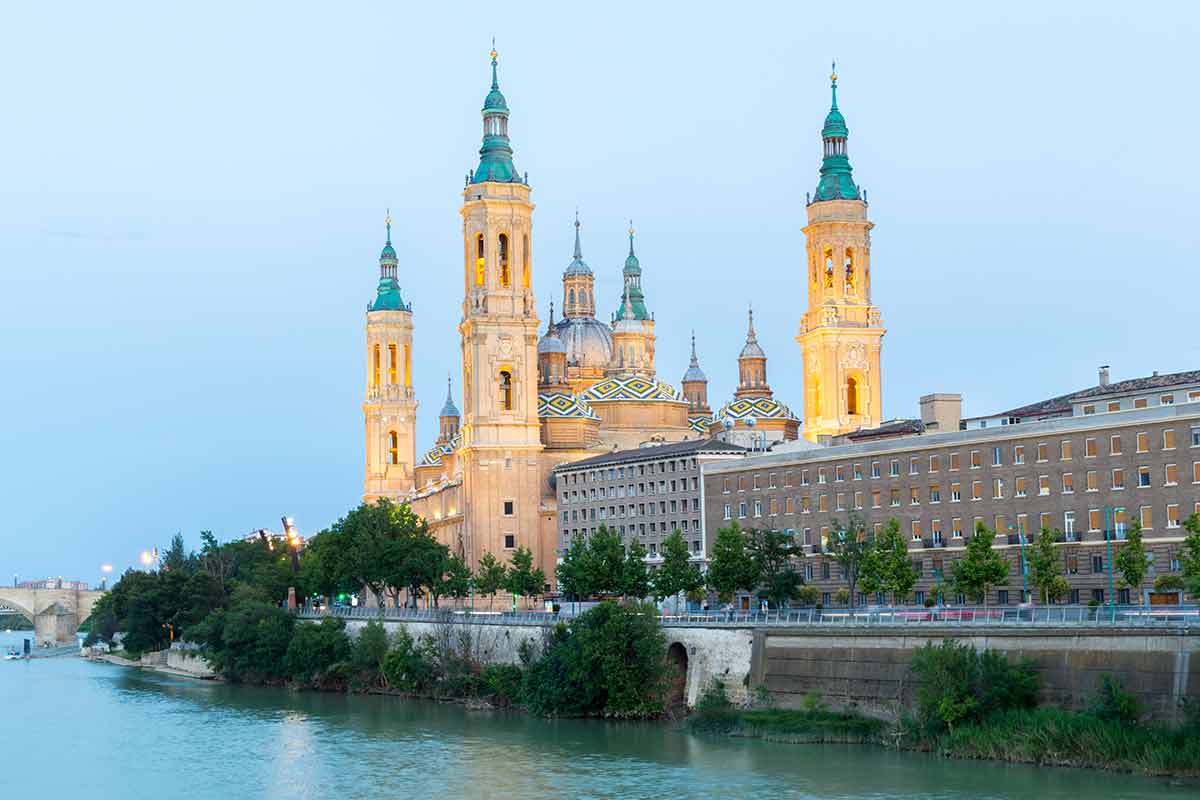
- Zaragoza: Private Tour – explore hidden gems with a local guide and discover the city’s secrets.
- Midday market and tapas tour of Zaragoza – taste local food and meet local characters.
- Zaragoza Aquarium – skip the line and reserve your admission tickets here.
- Private transfers Airport-hotel Zaragoza – avoid the hassle of finding a transfer when you arrive.
20 Things To Do In Zaragoza
1- Marvel At The Zaragoza’s Most Iconic Structure
On the banks of the Ebro River, The Basílica de Nuestra Seńora del Pilar’s grand presence reigns over the city, with 11 enormous domes and four square Neo Mudéjar towers reaching the sky.
Centuries of conquests brought new rulers and reformed the church several times.
The first major construction of a Romanesque church began in the 12th century under King Alfonso I after the city’s reconquest.
Then a fire in 1434 destroyed the structure and was rebuilt in a Gothic Mudéjar style.
Its final transformation, completed in 1686 under King Charles II, changed it to the Baroque-style church with the grand facades we see today.
High atop the 197 ft (60 meters) northwest tower, panoramic views of the city’s skyline, the domes, and the views of Ebro River await.
Take the lift to the upper level, then climb 109 stairs to see Zaragoza from an incredible vantage point.
The church also houses frescoes by the famous Spanish painter Franciso de Goya.
The first, La Adoración del Nombre del Dios, covers the ceiling of the small choir, and at the far east end above the north aisle rests a classical piece from 1772, the Regina Martirum.
Take time to discover one of the most interesting hidden features of the Basílica, two bombs dropped during the Spanish Civil War that failed to explode, now stuck in the northeast column of the Santa Capilla.
Basílica de Nuestra Seńora del Pilar is at Pl. de Ntra. Sra. del Pilar, 50003 Zaragoza.
Recommended tours:
- Full-day Somontano Wine Excursion and Visit Alquezar
- Monumental Walking Tour in the Old Town of Zaragoza
- Olive Oil Tour and Visit to Belchite Old Town
2- Ponder The Beautiful Designs Of La Seo Cathedral
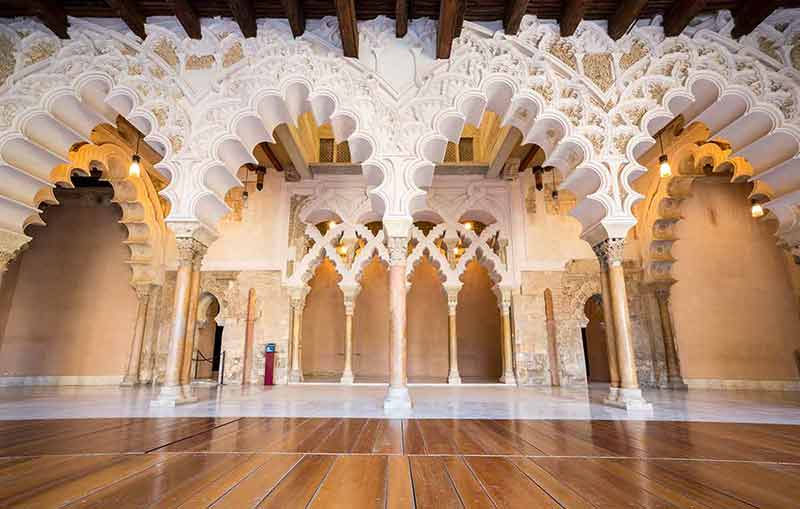
On the far end of the Plaza del Pilar, you will find Zaragoza’s second cathedral, the Catedral del Salvador, more widely known as La Seo.
A diverse medley of Gothic, Mudéjar, Romanesque, Renaissance, and Baroque architectural styles is more prominently displayed throughout the design than its nearby counterpart.
In this location, a temple was constructed in the 1st century BC upon the remains of the Roman Forum of Caesaraugusta.
Later during the Visigoth period, it became the site of both the church of San Vicente and the Greater Mosque of Saraqusta before the first Christian church was built in the 12th century, incorporating Romanesque features with the Mudéjar style.
The captivating outer wall, with intricate designs along with the dome, displays a masterpiece of the Aragonese Mudéjar style, and in 2001, it was declared a UNESCO World Heritage Site.
The European Gothic designs are evident in the main altarpiece, completed in the 15th century.
The Baroque bell tower, built in the 17th century, adds another dimension of beauty to this fascinating and complex cathedral.
La Seo captures the imagination between the elaborate exterior facade and the myriad of treasures in the interior, but one treasure, the Tapestry Museum housed inside the cathedral, is perhaps the best of all.
Catedral del Salvador de Zaragoza is at Pl. de la Seo, 4, 50001 Zaragoza.
Recommended tour: Zaragoza Scavenger Hunt
3- Enjoy A Different Form Of Art At The Tapestry Museum
The museums of Zaragoza are well known for their superb collections on exhibit, but if you are looking for something truly unique, stop by the Seo Chapterhouse Tapestry Museum to see the best collection of tapestries in the world.
Inside the La Seo Cathedral, 63 Flemish tapestries and 6 pieces of heraldic embroidery make up this extraordinary collection of Gothic, Renaissance, and Baroque styles dating to 15th-century medieval times.
On a rotating schedule, 11 different large, high-quality tapestries are on display along with other religious paintings and ornaments.
Don’t miss your chance to see the impressive religious scenes depicted in cloth designs up close.
The Tapestry Museum is at Pl. de la Seo, 4, 50001 Zaragoza, Spain.
4- View The Best Collection Of Goya’s Works At The Museo Goya
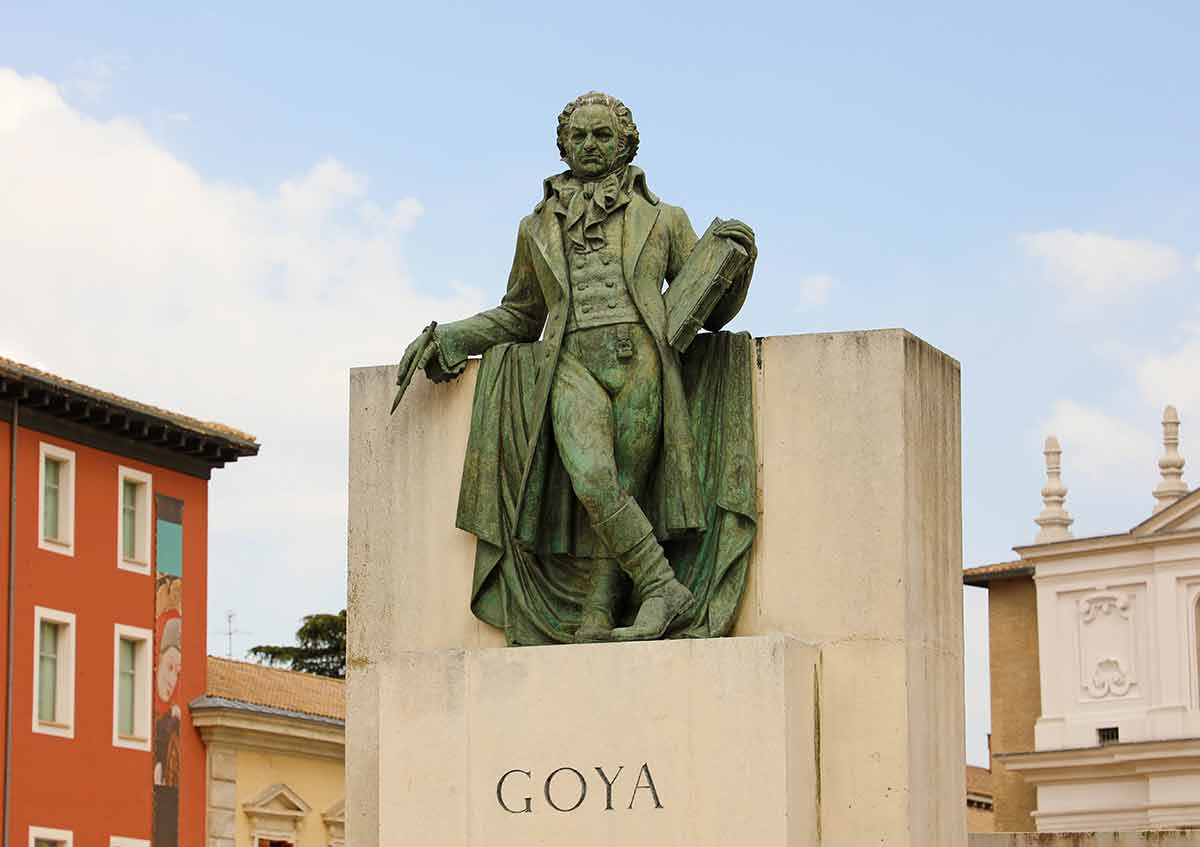
Renowned as one of the most famous Spanish artists in history, Franciso de Goya’s works are venerated by art enthusiasts from around the world.
His portrayal of Spanish life, and the disasters of war, captivate viewers intrigued by the tumultuous history of Spain.
The collection at Museo Goya delves into different aspects of his career.
The museum proudly exhibits some of Goya’s best paintings, captured during different periods, from the 1770s through the mid-1810s.
Themes include religious art and some of his best portraits, including one self-portrait.
Another area of interest pays close attention to his superb skills in printmaking with themes of capturing raw human emotion through realism.
Goya’s etchings depicted tragic Spanish scenes, including the devastation and suffering inflicted upon the people of Zaragoza during the French siege.
The gallery also showcases some of the artists that either inspired Goya or were his rivals from the 1780s through the Enlightenment age in Spain.
Learn about his strong connection to Zaragoza and the art he created during his time there.
The Museo Goya is at C. de Espoz y Mina, 23, 50003 Zaragoza.
Recommended tour: Full-Day Wine Excursion and Visit Goya Birthplace
5- Start In The Heart Of Zaragoza At The Plaza del Pilar
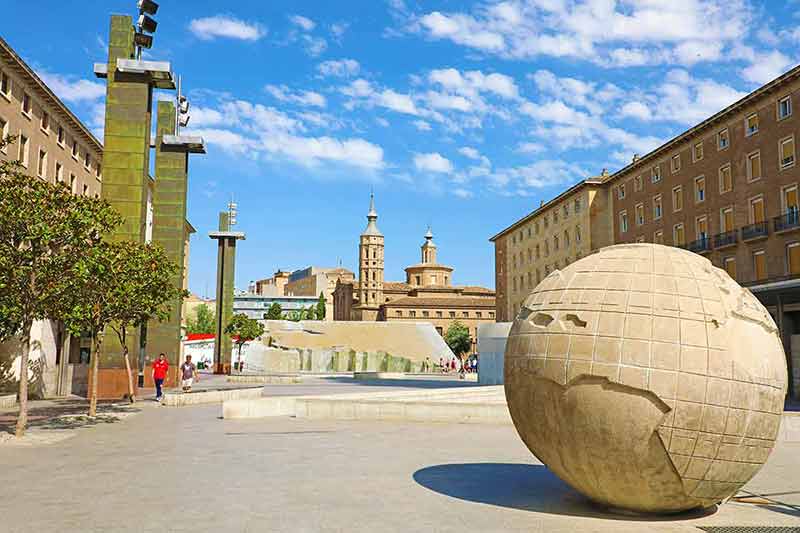
Known by locals as the “living room of Zaragoza”, the Plaza del Pilar, one of the largest pedestrian squares in all of Europe, serves at the centre point of the city, surrounded by the historical cathedrals of Basílica del Pilar, La Seo Cathedral, and the town hall.
On one end, the monument dedicated to Goya overlooks the plaza, and on the opposite side, the Fountain of Hispanidad, a large water feature created in honour of Hispanidad.
Also, in the square, the main tourist office of Zaragoza offers information about the best sites in the city to visit.
During the peak season, enjoy concerts or other events.
October 12th brings the flower offering, where thousands come from around the world to give flowers to the Virgen del Pilar.
With its extraordinary lighting and decorations, the Christmas market attracts visitors from around the country.
The Plaza del Pilar is at Pl. de Ntra. Sra. del Pilar, 50003 Zaragoza.
Recommended tour: Monumental Walking Tour in Old Town of Zaragoza
6- Cross The Puente de Piedra (Stone Bridge)
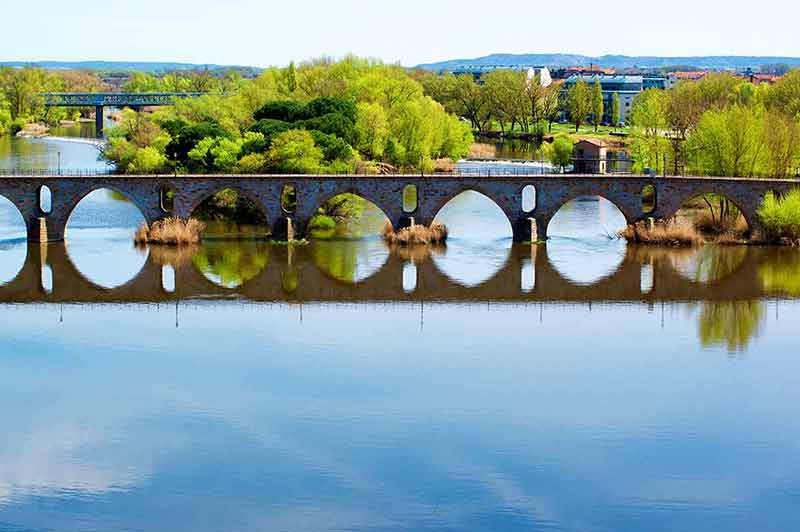
Spanning over 225 metres (738 ft) atop seven enormous arches, the Puente de Piedra of Zaragoza dates back to Roman times when the city was known as Caesaraugusta.
The earliest evidence of a stone or wood bridge came around the 1st century, but today’s bridge was completed in 1440.
Passing over the bridge, the four bronze lions on each corner were added in 1991, symbolising the strength and power of Zaragoza for nine centuries.
At the halfway point in one of the overlooks, the Cruz de Basilio statue honours those who died during the city’s siege.
Cross the Puente de Piedra later in the day to witness the incredible sunset reflecting off the Ebro River and the Basílica de Pilar, or cross in the evening to see Zaragoza’s stunning architecture illuminated at night.
Recommended tour: Kayaking in Zaragoza: Fluvial EcoTourism
7- See Impressive Hispanic-Islamic Architecture At The Aljafería Palace
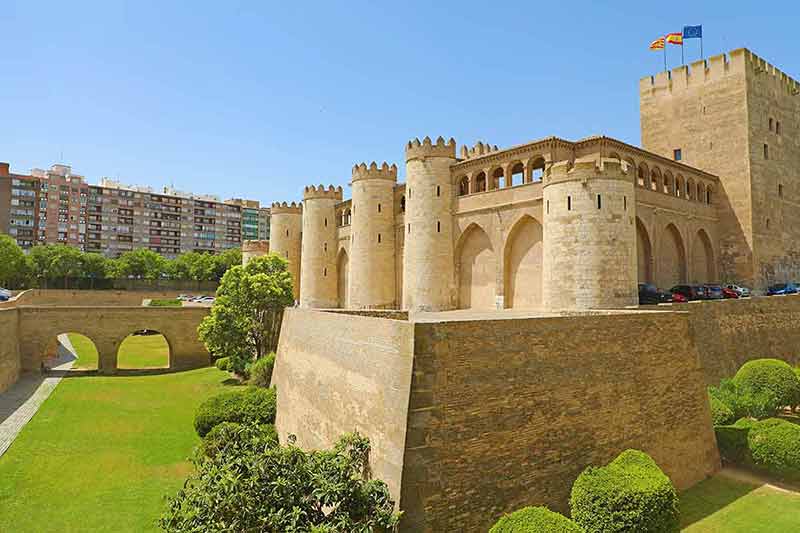
Housed inside thick fortified walls and surrounded by a moat, the Aljafería Palace served as the residence Al-Muqtadir and the Hudid rules of Zaragoza.
Constructed in the 11th century, the palace treasures are divided into three fascinating parts.
Inside the Golden Hall, the elaborate geometric designs, alabaster pillars, and ornate arches in every direction display the high level of craftsmanship desired by royal rulers of that time.
High above in each room, meticulous designs cover the ceilings, adorned with gold-painted features.
Adjacent to this, the mosque and the chapel on the eastern end of the entrance were for the monarch’s and his guests’ private use.
The mihrab that faces Mecca features a large horseshoe arch typical of traditional Islamic design, surrounded by smooth stones and organic style reliefs.
In the centre of the palace, the Patio of Santa Isabela brings together all of the historical sections of the palace.
Beautiful multifoil arches encompass the patio filled with flowers, hedges, and a waterfall and pool, signifying the importance of water in Muslim society.
The Aljafería Palace is at C. de los Diputados, s/n, 50003 Zaragoza 8.
8- Explore The Zaragoza Museum
Comprised of seven themed rooms on two levels, the Zaragoza Museum boasts an enormous collection of archaeological artefacts dating back to prehistoric times, fine art from the Gothic period to the 20th century, oriental art, ethnology, and ceramics.
As the oldest museum in the city, the extensive collection takes you on a journey through the history of mankind’s incredible creations.
The lower level, dedicated to archaeology, begins with artefacts from the Palaeolithic era and ends with discoveries from medieval times.
The second level showcases art from the Gothic, Renaissance, and Baroque periods up to modern times.
Some of Goya’s finest works are represented here.
Other featured artists include Spanish masters such as El Greco, Ribera, and Velazquez and European artists such as Rembrandt, Renoir, and Manet.
Renowned as the best collection of oriental art in Spain, the Zaragoza Museum exhibits objects ranging from the 3rd to 20th century, with pieces mostly originating from Japan and China.
The ceramics on display are diverse and plentiful, with superb examples from all over Spain, but Aragonese pottery from the 19th and 20th centuries takes the spotlight.
The Zaragoza Museum is at Pl. de los Sitios, 6, 50001 Zaragoza.
9- Travel Back In Time To A Roman Theatre
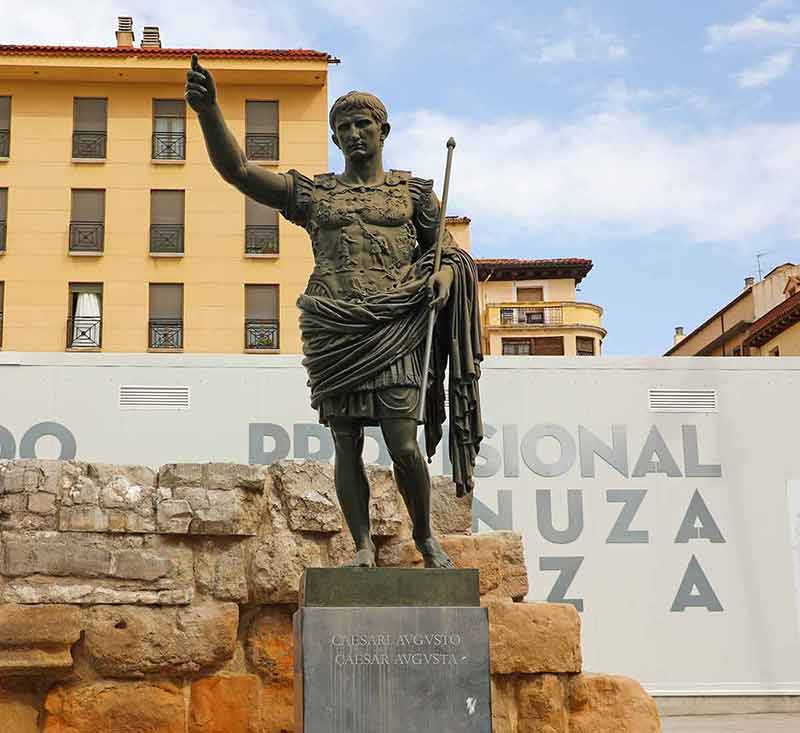
The origins of Zaragoza date back more than 2,000 years to ancient Caesaraugusta, a city named in honour of the Emperor during the 14th century BC.
The Museo del Teatro de Caesaraugusta allows you to step back in time and imagine what it must have been like sitting among the spectators for a theatrical show.
Constructed in the 1st century AD, the Roman Theater of Zaragoza, the largest in Spain, supplied a venue for 6,000 Romans to enjoy live entertainment.
Throughout the museum, artefacts discovered during the time of the excavation are on display, as well as models that reconstruct the original design.
The Museo Del Teatro De Caesaraugusta is at C. de San Jorge, 12, 50001 Zaragoza.
10- Imagine Roman Life At The Museo del Foro de Caesaraugusta
Below the alabaster cube in Plaza la Seo, discover the remains of the Roman Forum at the Museo del Foro de Caesaraugusta.
This museum enlightens visitors to the ancient history of Zaragoza.
Reconstructed models of the forum allow you better to understand the meaningful history behind these magnificent structures.
Nine showcases exhibit the ceramic remains from the period of the forum while it was in use.
Fragments of lead pipes that brought water to the city are still visible and the great sewer system Tiberius built.
Several panels describe how the government at this time functioned, painting a better picture of Zaragoza’s ancient Roman past.
The Museo del Foro de Caesaraugusta is at Pl. de la Seo, 2, 50001 Zaragoza.
11- Find Out How Roman High Society Lived At Museo De Las Termas Públicas De Caesaraugusta
Beyond cleaning the body, and having a calm place to relax, the thermal baths provided a meeting point for the Romans to socialise and share ideas.
The Museo de las Termas Públicas de Caesaraugusta opens a window into the daily lives of these high members of society from thousands of years ago.
During 1982 to 1983 construction work in the city uncovered the remains of a Roman thermal pool.
Between the theatre and the forum, these baths were considered the largest in Caesaraugusta, used between the 1st and 4th AD.
The remains that were discovered and many artefacts from the same period are on display.
Panels help explain the facility’s separate areas, including a changing room, hot warm and cold rooms, recreation spaces, and the garden.
The Museo de las Termas Públicas de Caesaraugusta is at C. de San Juan y San Pedro, 7, 50001 Zaragoza.
12- Try Some Local Tapas In El Tubo (the tube)
Filled with lively bars and small restaurants, El Tubo, one Zaragoza’s hidden gems, draws crowds of locals and visitors eager to taste a variety of Spanish tapas from the region.
After dark, the narrow city streets come alive, with people looking for the next trendy spot.
To find this neighbourhood, wander between Mártires, Estébanes, and Cuatro de Agosto streets, and when you start seeing people outside sitting on stools having a great time, you’ve found the right place.
Some tasty dishes you should try along the way, unique to Zaragoza, are pinchos (kebabs, with barbecued meat), croquettes or calamaries (fried and breaded fish), montaditos (a small piece of toasted bread served with fish or meat on top), or huevos rotos (fried eggs, with french fries and meat).
Recommended tour: Midday market and tapas tour of Zaragoza
13- Take A Stroll Around The Parque Grande José Antonio Labordeta
What locals refer to as Park Grande, the Parque Grande José Antonio Labordeta, named after the famous singer-songwriter and politician, stretches across 44 hectares (109 acres) on the edge of the city, greeting the residents and visitors of Zaragoza with large natural green spaces and historical monuments.
To enter the park, cross the Puente de los Cantautores, and walk down the Paseo de San Sebastián, to see the gardens inspired by the Palace of Versailles.
As you wander around the lakes, fountains and monuments, visit the botanical garden from 1796, and Fuente de las Princesa (Fountain of the Princess), built in the 19th century.
To get around the park quicker and with ease, consider renting a bicycle or pedal car, or to get out of the sun, visit the Ethnological Museum to see ceramics and farming equipment from the Pyrenees and northern part of Aragon.
The Parque Grande José Antonio Labordeta is at P.º de Isabel la Católica, 75, 50009 Zaragoza
14- Admire Gargallo’s Modern Sculptures At The Museo Pablo Gargallo
The Argonese artist Pablo Gargallo, renowned for his modern sculptures made from metallics such as copper, brass, iron and lead, created astounding works at Plaza Cataluña and the Montjuïc Olympic Stadium in Barcelona.
At the Museo Pablo Gargallo, housed inside a Renaissance-style palace, take a journey through Gargollo’s life through sculptures, drawings, and engravings from his early years until his death.
On the first floor, an audiovisual projection gives you a deeper understanding of the progression of his artistic career and the meaning behind his creations.
The permanent exhibits on the second and third levels explore the intricate process of casting a sculpture, followed by representations of Gargallo’s sculptures from 1904 until he died in 1934.
The Museo Pablo Gargallo is at Pl. de S. Felipe, 3, 50003 Zaragoza.
15- Learn About Aquatic Life At The Aquarium River of Zaragoza
Known as the largest river aquarium in Europe, the Aquarium River of Zaragoza is home to 4,000 different animals from the five most important rivers in the world: the Nile, the Amazon, the Mekong, the Darling Murray and the Ebro.
Originally the site of the 2008 Zaragoza International Exhibition, this 3,400 square metres (36,600 sq ft) facility educates its visitors on the freshwater animals that inhabit our largest rivers through activities designed for young children.
Kids have the wonderful opportunity to learn about various interesting species of animals, including anacondas, piranhas, crocodiles, otters, and titi monkeys who live outside the water on the banks of these great rivers.
The Aquarium River of Zaragoza is at Av. de José Atarés, s/n, 50018 Zaragoza. Skip the line and book your tickets here.
16- Delve Into Tradition At The Museo de los Faroles y Rosario de Cristal
One of Zaragoza’s most popular traditions, the Crystal Rosary, a solemn procession, occurs annually on the night of October 13th at sunset.
Dating back to 1890, this march through the streets of the city features 258 lanterns and 15 polychrome glass floats.
At the Museo de los Faroles y Rosario de Cristal, you can examine these exquisite creations up close and learn about the heritage of this special event.
The Chariot of the Alcácar of Toledo, the Chariot of the Temple of Pilar, and the Hispanidad carriage are some of the most impressive floats.
Museo de los Faroles y Rosario de Cristal is at Pl. de San Pedro Nolasco, s/n, 50001 Zaragoza.
17- Go Back Into Zaragoza’s History At Alma Mater Museum
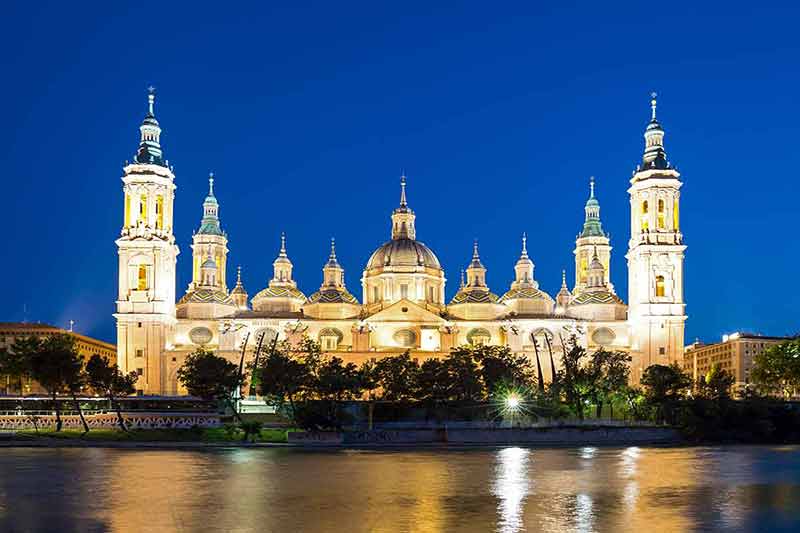
Go back to Zaragoza’s early beginnings at the Alma Mater Museum.
The collection of sacred art exhibited on three floors in this palace displays remnants belonging to the Archdiocese of Zaragoza, representing the city’s early Christian and Islamic roots.
On the first floor, see images and objects related to the Virgin of El Pilar, remains from Roman times and the old tower, and designs for the La Seo Cathedral and the Basilica del Pilar.
The exhibits on the second floor display beautiful pieces from the Gothic and Mudéjar palaces from the 14th century, Gothic paintings, and Renaissance and Baroque art related to the progression of religion during medieval times.
On the third floor, the bishop’s and throne rooms display portraits of Zaragoza’s bishops, including one painted by Franciso Goya.
Another room presents temporary exhibitions.
Alma Mater Museum is at Pl. de la Seo, 5, 50001 Zaragoza.
18- Discover The Evolution Of Firefighting At Museo del Fuego y de Bomberos
Housed inside what was once a convent, the Museo del Fuego y de Bomberos seeks to educate the public about the history of firefighting and the equipment used over hundreds of years to battle blazes.
As you explore the museum, the staff on hand, entirely made up of firefighters, guides you through the exhibits, answering questions and explaining the interesting history behind equipment in the collection.
Audiovisual presentations geared toward children bring awareness to the dangers of a house fire and what to do if one breaks out.
Outside, you can examine the firefighting vehicles used in the past.
The museum offers an interesting perspective into the lives of firefighters, past and present.
Museo del Fuego y de Bomberos is at C. de Santiago Ramón y Cajal, 32, 50004 Zaragoza
19- Have Some Fun At The Zaragoza Amusement Park
If you’re looking for a little fun during your visit, the Zaragoza Amusement Park entertains all ages.
Open from March to October, the modern attractions provide hours of excitement with roller coasters and splash rides, as well as an Olympic size swimming pool open during the summer months.
Travel to the Gran Tikal, and discover the ancient Mayan secrets!
Zaragoza Amusement Park is at P.º del Duque de Alba, 15, 50007 Zaragoza.
20- Go Shopping At The Mercado Central de Zaragoza
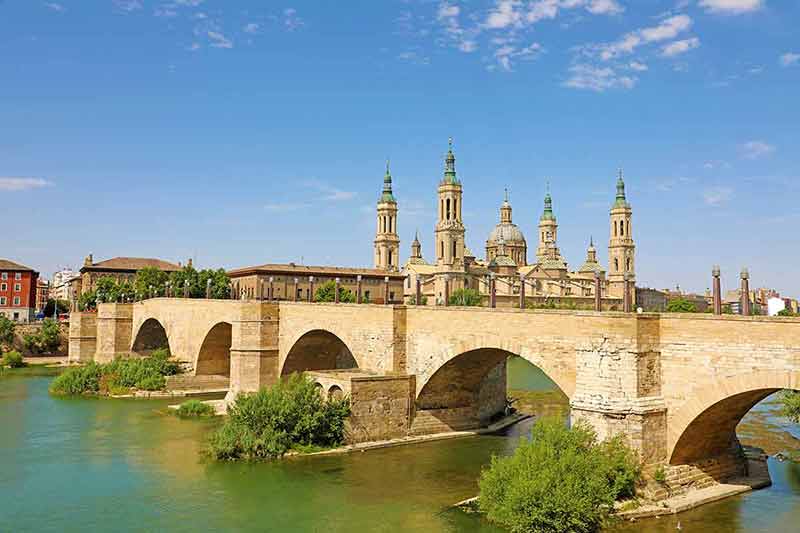
If you looking to buy some fresh food products from around the region or stop and have a drink or a bite to eat, go to the Mercado Central.
Just a short walk away from the Plaza del Pilar, it won’t disappoint.
74 food stalls make up this lively venue, housed inside a stunning and recently reformed building dating back over a century ago.
During the weekend, check out one of the live performances.
Mercado Central de Zaragoza is at Av. de César Augusto, 110, 50003 Zaragoza.
Recommended tours:
Love Spain? Read these posts:
- 27 Spanish Shows On Netflix
- 20 Fairytale Castles In Spain
- 30 Landmarks in Spain
- 20 Places To Visit In Spain In Winter
- 20 Best Beaches In Spain
- An Amazing Andalusia Road Trip
- 20 Things To Do In Ibiza
- 20 Things To Do In Tenerife
- 21 Things To Do In Lanzarote
- 21 Spanish Drinks To Try
- 20 Things To Do In Madrid At Night
- 20 Day Trips From Madrid
- Best Time To Visit Spain
- 20 Cities in Spain
- Renting A Car In Barcelona
- 20 Things To Do In Seville
- 20 Things To Do In Granada
- 20 Things To Do In Zaragoza
- 20 Things To Do In Palma
- 20 Tours In Spain
- 20 Things To Do In Alicante
- 20 Spanish Food / Dishes
- 20 Things To Do In Ronda
- 20 Things To Do In Cadiz
- 20 Thing To Do In Benalmadena
- 20 Things To Do In Torremolinos
- 20 Landmarks In Barcelona
- 5 Day Trips From Barcelona
- Barcelona Bike Tour
- 10 Things To Do In Bilbao
- 12 Things To Do In San Sebastian
- 10 Things To Do In Oviedo
- Storybook Village of Santillana del Mar
- 20 Things To Do In Gran Canaria
- 20 Things To Do In Barcelona At Night
- Christmas in Spain
- 20 Things To Do In Malaga
- 20 Things To Do In Marbella
- 20 Things To Do In Valencia
- Where To Stay In Valencia
- Ibiza At Night
- 20 Things To Do In Ibiza
- 20 Things To Do In Toledo
- Where To Stay in Barcelona
- 20 Things To Do In Segovia
- Where To Stay in Tenerife
- Where To Stay in Madrid
- Where To Stay In Mallorca
- Where To Stay In Ibiza
- 15 Things Spain Is Famous For
Plan Your Trip

Rent A Car – Find the best car rental rates at Discover Cars. They compare car hire companies to provide you with the best deal right now.

Find A Hotel – If you’re curious about this article and are looking for somewhere to stay, take a look at these amazing hotels.

